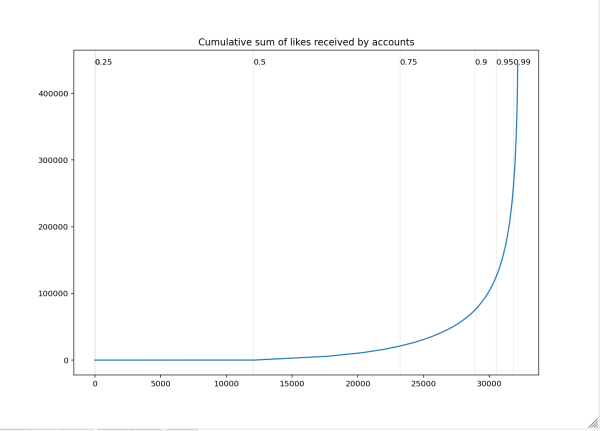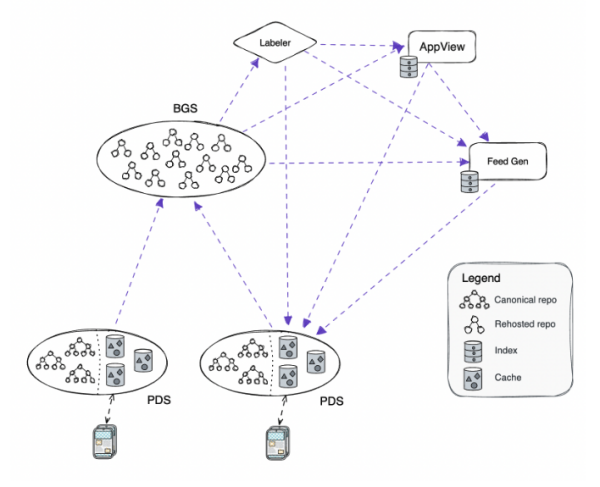Search
Items tagged with: atprotocol
From a preliminary ~12h sample of #bluesky / #atprotocol , a small number of accounts receive most interactions. This is an obvious byproduct of the way the default algorithmic feed prioritizes posts.
- 5% of accounts received 72% of likes, 1% of accounts received 41%
- The top 5% of accounts make 48% of posts
- 37% of accounts receive no interaction
- The median account received 1 like.
Just a quick, incomplete look, but ya looks like an engagement farm
- 5% of accounts received 72% of likes, 1% of accounts received 41%
- The top 5% of accounts make 48% of posts
- 37% of accounts receive no interaction
- The median account received 1 like.
Just a quick, incomplete look, but ya looks like an engagement farm
#Bluesky / #ATProtocol is an extremely funny protocol that is explicitly designed to ensure that there are still powerful entities that own your attention. Sure! you can host your own personal data store, but everyone else will be getting your posts through a Big Graph Service that necessarily crawl all posts on the network, so it's actually mostly irrelevant.
https://blueskyweb.xyz/blog/5-5-2023-federation-architecture
https://blueskyweb.xyz/blog/5-5-2023-federation-architecture
Federation Architecture Overview
Soon, we’re launching a sandbox environment for federation. In advance, we want to share some technical details about our design decisions.blueskyweb.xyz
lmao taking a look at #ATProtocol / #Bluesky's implementation of #DID, and I think they missed the "decentralized" part in their "placeholder" DID method.
Your domain's DNS entries just contain a (truncated) hash that then has to be resolved at plc.directory
recall that the DID method (plc) is part of the DID, so a different method (eg. web) is a different DID. to switch, you'd need to set an alsoKnownAs entry. plc only supports AT handles for alsoKnownAs.
https://github.com/bluesky-social/did-method-plc#did-resolution
Your domain's DNS entries just contain a (truncated) hash that then has to be resolved at plc.directory
recall that the DID method (plc) is part of the DID, so a different method (eg. web) is a different DID. to switch, you'd need to set an alsoKnownAs entry. plc only supports AT handles for alsoKnownAs.
https://github.com/bluesky-social/did-method-plc#did-resolution
GitHub - bluesky-social/did-method-plc: A cryptographic, strongly-consistent, and recoverable DID method
A cryptographic, strongly-consistent, and recoverable DID method - GitHub - bluesky-social/did-method-plc: A cryptographic, strongly-consistent, and recoverable DID methodGitHub



